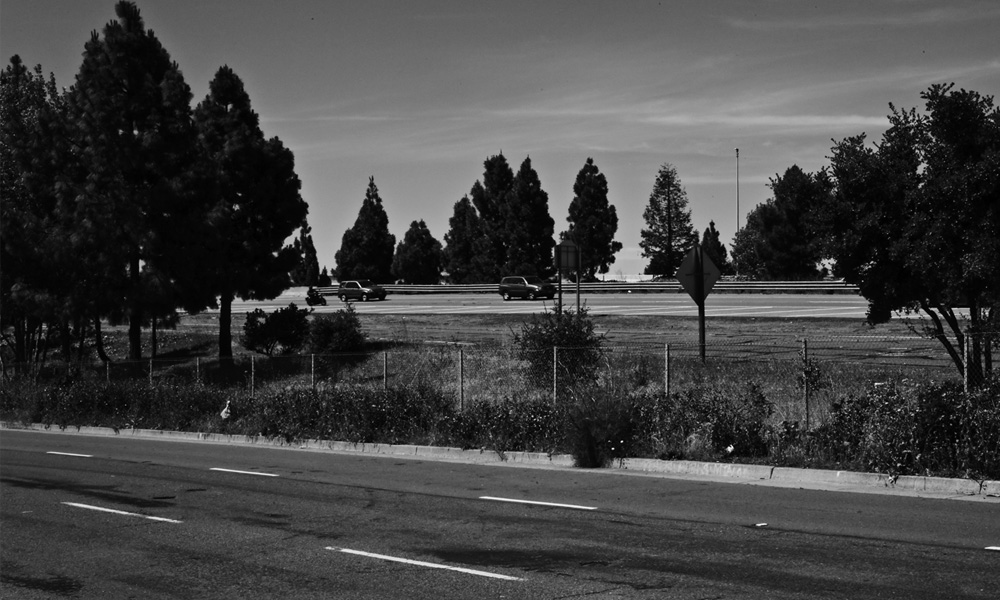
CNU Calls I-980 a Freeway Without A Future
The Congress for New Urbanism just released their 2017 list of Freeways Without Futures today. The fifth version of this list is a rogues gallery of underutilized, socially harmful, and economically regressive routes targeted for highway removal. 2017 is also the first year that Oakland has made the list. Our presence reflects growing consensus both in the Town, and across the country, that the 18 lane wide space between I-580 and I-880 currently occupied by the glorified exit ramp known as I-980 has much more benefit for Oakland and for the Bay Area as a different use.
ConnectOakland proposes transforming the route into a mass transit corridor, into city-owned land for housing, and into an attractive and vibrant street connection to a potential waterfront ballpark at Howard Terminal. The ConnectOakland vision is notable on this year’s list because other projects focus on highway removal to fix preexisting bad decisions, but the ConnectOakland vision not only uses highway removal to heal historical wounds, but also repurposes the space of I-980 as the key to a more resilient and more efficient transit infrastructure for the entire Bay Area.
We Need Your Help to Make the Vision Reality
We need the support of all Oaklanders over the next decade to achieve this vision and to make this goal of highway removal a reality. Our odds are long — as of now only nine highways have been removed from North American cities, although another three will be gone by 2018. The inclusion of I-980 on the Freeways Without Futures list is a major step in the right direction since 5 highways included in previous lists have since met the wrecking ball.
Read on for the full CNU statement (or read it at CNU):
CNU Freeways Without Futures 2017
The project, which has gained widespread support in recent months, would reuse the freeway space for major regional rail service running under a surface boulevard.
While the idea of removing I-980 has been discussed since its completion in the mid-80s, the current leading design concept came from a citizen-led campaign called ConnectOAKLAND, started in 2014 to advocate for the removal of the freeway and the reconnection of the street grid. ConnectOAKLAND’s vision would create or re-open 21 new city blocks—totaling approximately 17 new acres of high-value, publicly controlled land.
“With imaginative engineering and design, [I-980] could be replaced by a boulevard lined with housing at all price levels, reknitting the urban landscape,” wrote John King of the San Francisco Chronicle, in a major review of the concept last year.
ConnectOAKLAND’s vision has gained support with community leaders and in City Hall, including from Oakland Mayor Libby Schaaf. “Our I-980 is a cautionary tale,” says Schaaf. “It was proposed as a part of a plan to build another Bay Bridge and a shopping mall—but this broken promise leaves us with a scar across our city that separates our residents from opportunity. In its place, we want to reknit our community, building infrastructure that creates local economic opportunity, reconnects neighborhoods, and helps connect the region.”
The freeway is now an underused remnant connecting CA-24 and I-580 to I-880. While it carries only 73,000 cars a day and no freight traffic, it cuts an enormous 18-lane swath through the center of Oakland and isolates the West Oakland neighborhood. The design of the freeway was typical of large scale 20th century infrastructure projects, which disproportionately affected low-income communities of color in a quest to improve commutes for affluent white suburbs.
A new design for this corridor could help repair the wounds of past decisions. “We believe the I-980 project must focus on equity, integration and investment in the community,” says campaign founder Chris Sensenig. “ConnectOAKLAND will continue to work with the City of Oakland to make sure the proper mechanisms are in place to improve the quality of life in the neighboring communities and limit displacement.”
The City of Oakland included the I-980 corridor multi-way boulevard into the Draft Downtown Specific Plan, and is now seeking funding for community outreach, project planning, and engineering studies. The Mayor’s Policy Director for Transportation and Infrastructure, Matt Nichols, has been actively engaging key agencies, including Caltrans, the state’s DOT, as well as HUD and FHWA, affordable housing lenders, and social equity institutions such as PolicyLink.
“While still in the early stages,” says Nichols, “the I-980 transformation could provide not only a ‘highway-to-boulevard’ repair of our urban fabric, but also a showcase for how social equity-led design could be profoundly transformative for Oakland and the region.”

It seems there are many pro-bicycle/pro public transportation people in Oakland who have a mission to make driving to destinations even more painful than it already is by developing and not adding enough parking, and now this! Yes, restructure 580/880/80 first and the talk about getting rid of this freeway! I use 980 almost every day! Don’t do it!!
California needs to focus on these badly damage roads and bridges since theyre saying theres no funds to fix them leave 980 alone that is a major transit road for people coming fron contra costa county and or trying to connect to 880 or downtown oakland if so i think we need more roads the bay area has over a million people living around these areas so this would be a stupid idea expand bart build a 2nd transbay tube fix these badly damage highways